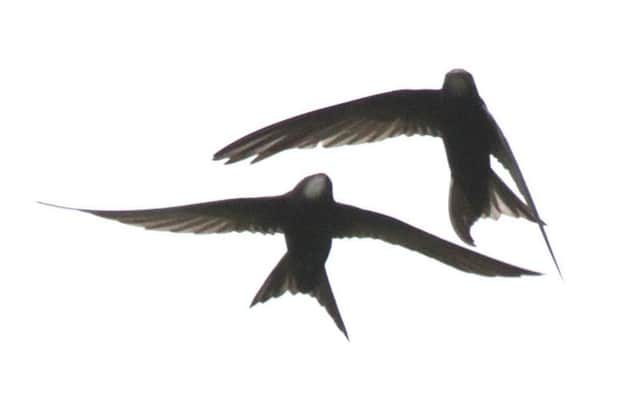Birdwatch: Survival battle for screaming birds


With their dependence on flying insects for food swifts are more influenced by the weather than any other of our birds.
The adults move away from bad weather by heading into the prevailing winds as by doing so they skirt round the depression.
Advertisement
Hide AdAdvertisement
Hide AdBut what of young birds left behind with no food supply or the essential warmth of a brooding parent? They cope by slipping into a torpor where the body temperature and respiratory rate both drop, minimising energy consumption. In this way they can last for up to 48 hours without any food until the parents return.
The storms have been just the latest weather problem faced by swifts this year. A wetter than normal May meant many were late arriving back and those that did manage to breed were only just starting to incubate their eggs at the start of last month.
With only 16 weeks from their arrival in which to mate and rear young before leaving for southern Africa again early next month many will not have had time to breed this year.
Annual surveys of swifts organised by the RSPB and other conservation groups focus on two main periods, May and this month. In May any screaming swifts are noted- hearing one probably means that its mate is incubating eggs nearby.
Advertisement
Hide AdAdvertisement
Hide AdThen this month there should be larger groups of screaming swifts made up of virtually all the breeding adults, non breeders and possibly some of the newly fledged young flying over the rooftops.
The surveys also record places where swifts have disappeared from a particular area, perhaps as the result of building renovations depriving them of crevices to nest in. In these places swift nest boxes can be installed as an alternative.
Swifts are declining in this country with a 31 per cent fall in numbers between 1995-2009 and with a continuing decline of around three per cent each year.
The little bittern has continued to be seen on the RSPB’s Old Moor reserve mostly in flight but also perched in trees.
Advertisement
Hide AdAdvertisement
Hide AdIn addition a drake American wigeon and a black-necked grebe were seen on the reserve. Check the reserve website for the latest news on opening hours.
More waders have been arriving at Blacktoft Sands with 14 species recorded so far this month while on the Yorkshire coast a white-rumped sandpiper, a North American vagrant, was seen on Beacon Ponds. A little stint was seen at Swillington Ings, Leeds and two wood sandpipers at Fairburn Ings.
The young Montagu’s harriers at Blacktoft Sands - there are thought to be three - are likely to be taking to the air for the first time this weekend.
Two common cranes were seen at Potter Brompton near Scarborough and a quail was calling in an area where there is no public access.